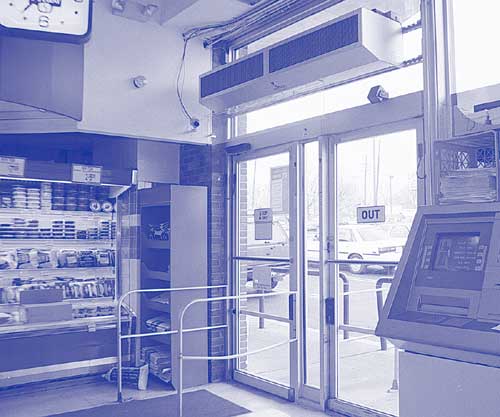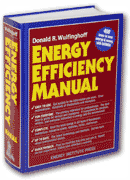Overview of…
Section 6: BUILDING AIR LEAKAGE
This Section of the Energy Efficiency Manual shows you how to save energy by eliminating unwanted air leakage through the building structure, commonly called “infiltration.” The energy saving measures are grouped by the four major areas where air leakage occurs, which are doors for people, vehicle and industrial doors, the windows, and the walls and roof.
New buildings can be designed and constructed to minimize air leakage at little additional cost. You can often reduce leakage in existing buildings by using methods that are inexpensive and simple. In any building, minimizing air leakage requires continuing maintenance of doors, windows, weatherstripping, and other components. Here you will learn the methods.
The book explains when air leakage through the building envelope is a significant source of energy waste and when it is not. This depends largely on ventilation requirements.
Air leakage can also cause comfort problems. During cold weather, air leakage causes discomfort in the form of drafts that affect people located near walls, doors, and passages leading to the outside. In addition to being uncomfortable, drafts motivate occupants to increase heating and cooling energy consumption.
Many buildings maintain a positive pressure to avoid discomfort from infiltration. Some buildings, such as hospitals, hotels, and laboratories, maintain pressure differences between spaces to prevent the spread of contaminants. Air leakage makes it expensive or impossible to maintain desired building pressurization.
Click here to return to the Table of Contents


